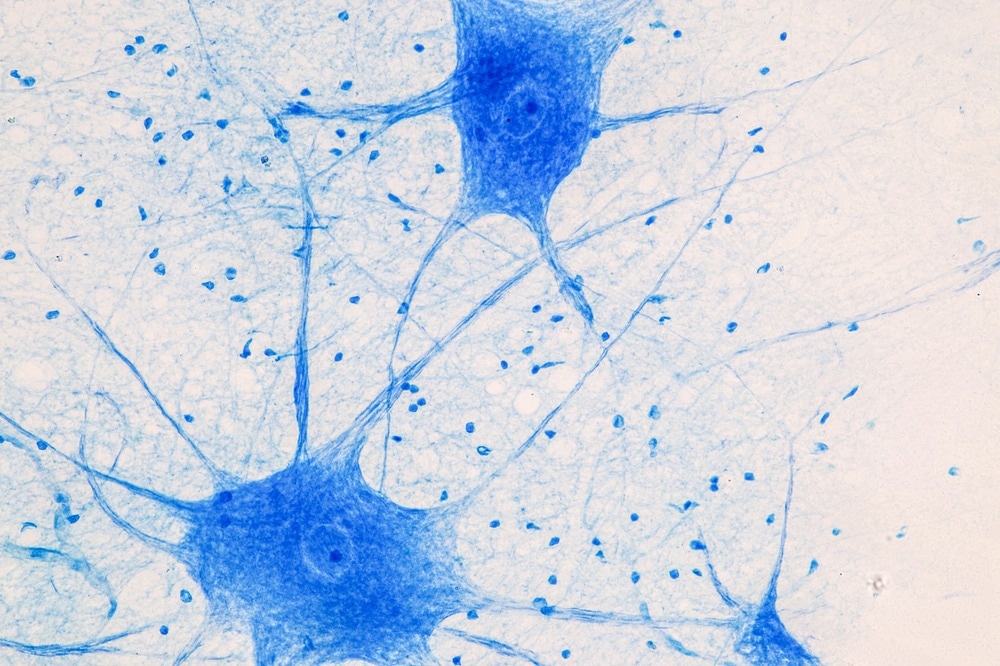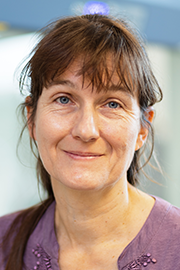 insights from industryLiam TaylorDr. Sian HumphriesDr. Steven Broadbent
insights from industryLiam TaylorDr. Sian HumphriesDr. Steven BroadbentIn this interview, we speak to representatives of Axol Bioscience about their human iPSC-derived cells and how they have the potential to revolutionize the field of neurodegenerative disease.
Please can you introduce yourself and tell us about your role at Axol Bioscience?
Liam Taylor: I have been the CEO of Axol for two and a half years and oversaw the merger of Censo Biotechnologies and Axol Bioscience in 2021 to form the Axol Bioscience company as it is today.
Dr. Steven Broadbent: I am the Senior Scientific Support Manager at Axol Bioscience and help customers and service partners with their technical inquiries. I am a trained electrophysiologist working on MEA and imaging systems at Axol.
Dr. Sian Humphries: I am a Project Manager at Axol Biosciences, designing and managing research projects within Axol. I have extensive pharmaceutical discovery experience encompassing exploratory target discovery, cloning, cell line generation, and screen development.
Axol Bioscience is ‘committed to being a trusted supplier of human iPSC-derived cells’. Can you tell us more about why the company was founded and what some of your core missions are?
Liam: Axol Bioscience was founded in 2013 by Jonathan Milner and Yichen Shi in Cambridge, UK, initially promoting human iPSC-derived neural stem cells, supporting media, and reagents. Censo Biotechnologies, formed in 2016 out of the Roslin Institute in Edinburgh, was a stem cell technology company providing human cells and contract research services for drug discovery, toxicity testing, and cell banking.
In March 2021, Censo Biotechnologies and Axol Bioscience merged to form the Axol Bioscience of today, providing human iPSC-derived cells and services to the biopharma industry. Axol’s mission is to be our customer’s valued partner in delivering quality, consistent iPSC-derived cells, models, or assay data to drive R&D and drug discovery.
iPSC-derived cells have been produced for a wide range of animal species as well as humans. What are the advantages for researchers of using human iPSC compared to iPSCs derived from animals?
Sian: iPSC-derived cells offer a huge opportunity to have continuous, reproducible supplies of specific cell types. Human iPSC-derived cells enable differentiated cells to be used in models of human disease and for drug testing.
While animal models and iPSCs derived from animals are also used in these areas, there are inherent problems in the translatability of any responses from animal models or cells to a human disease or treatment. Using human iPSC-derived cells removes this issue and provides more human-relevant responses and information about disease and treatments.

Image Credit: Jan Bruder/Shutterstock.com
On your site, you offer various cell types and reagents. Can you tell us more about the products available at Axol Bioscience and their various applications within preclinical research?
Sian: Axol offers a portfolio of human iPSC-derived cell types and associated media and reagents for use in modeling various neurodegenerative, neuroinflammatory, and cardiac disease areas. For preclinical testing of treatments for neural diseases such as Parkinson’s, Alzheimer’s, Huntington’s, and ALS, we offer a range of iPSCs derived from patients with these diseases, which can be differentiated into any cell type, such as cortical and motor neurons. These cells can then be used alone or in co-culture with supporting cells such as microglia or astrocytes (which we also provide) to mimic the physiological situation in vivo. Axol’s ventricular and atrial cardiomyocytes can also be used to test drugs for cardiotoxicity before they enter human trials and look at specific cardiac disease areas such as atrial fibrillation.
You are exhibiting at SfN as well as showcasing a poster with your latest research concerning the maturation of your iPSC motor neurons. Can you tell us more about why you decided to undertake this project?
Steven: Axol has participated in a European Union Horizon 2020 Research and Innovation Program called Platforma to develop an advanced human neuromuscular junction tissue platform for testing cosmetics and ALS research applications. Part of this project required us to provide mature motor neurons to innervate skeletal muscle and to achieve that, we developed a motor neuron “accelerator” media supplement, which reduces the time to reach functional maturity from six weeks to 10 days.
In our poster, we demonstrate the use of this supplement to produce a more physiological, modified growth medium for the maturation of motor neurons. We also demonstrate that motor neurons derived from an ALS patient in this system exhibit longer burst trains and decreased synchronization compared to wild-type motor neurons, providing a disease-relevant model for medium throughput compound screening or mechanistic studies.
Despite neurodegenerative conditions, such as amyotrophic lateral sclerosis (ALS), affecting millions of people worldwide, understanding these conditions can be challenging. Why is this?
Steven: These conditions involve multiple cellular interactions, and recreating these to model a disease either in a whole organism, such as a rat or mouse, or in vitro, in a cellular system, is complex. As discussed, animal models do not represent human conditions very well, especially neurodegenerative conditions involving more cognitive abnormalities, such as dementia, that rats or mice do not experience.
A physiologically relevant cellular model also has limitations, but co-culturing a number of key cell types, such as motor neurons and skeletal muscle cells for ALS, ideally derived from patients with the disease, offers a human-relevant system in which to start characterizing disease phenotypes and therefore, potential treatment targets.

Image Credit: Rattiya Thongdumhyu/Shutterstock.com
Motor neurons derived from induced pluripotent stem cells (iPSC) can provide an unlimited source of cells that can be used to study neurodegenerative conditions, but traditionally these take up to six weeks to fully mature. What are the challenges surrounding this waiting time, and how does your latest research reduce this functional maturity from six weeks to ten days?
Sian: Mature cell types are needed to better represent many neurodegenerative conditions that often beset aging populations. Many iPSCs traditionally have been generated with immature and/or fetal-like geno- and phenotypes and are not representative of such patient groups. Therefore, methods to increase cell types' maturation are key to having relevant disease models. Where this maturation period can be speeded up, many cost savings (e.g., resources, reagents, and time) can be made, and this enables a faster turnaround in areas such as screening for potential therapeutic compounds.
In developing a supplement to accelerate motor neuron maturation, we have tried to recreate the developmental milieu of motor neurons, driving rapid maturation. The supplement works by mimicking in vivo signals between motor neurons and their supporting cells and contains signaling factors present in the native environment of motor neurons.
What did you discover from your research, and how can this discovery provide an invaluable tool for further research into neuromuscular disease?
Steven: By maturing motor neurons for ten days in this supplement and culturing these cells with iPSC-derived skeletal muscle, we were able to demonstrate the formation of neuromuscular junctions in a microfluidic system. MEA and Incucyte® Neuroburst Orange Lentivirus recordings were made from day 10-matured iPSC-derived motor neurons from a healthy donor and day 7-matured motor neurons from a donor with ALS.
Wildtype motor neurons displayed synchronized spontaneous firing, while the ALS motor neurons saw longer burst trains and decreased synchronization. This motor neuron / skeletal muscle co-culture was therefore shown to exhibit a clinically relevant phenotype and indicates a fully human, preclinical screening model of the neuromuscular junction and ALS is available.
On your site, as well as showcasing your products and services, you also offer a wide variety of resources, including application notes and how-to guides. How does the availability of various resources improve customer relationships and foster new research?
Liam: Axol believes in being transparent and open with our customers and provides as much information on our cell types and services as we can. The relationship with our service customers is key for understanding research areas of interest and potential new product development, while by sharing as much data on our products as possible, we believe we can advance the understanding of various disease models and foster collaborations between groups interested in these research fields.
What is next for Axol Bioscience? Are you involved in any exciting upcoming projects?
Liam: Axol is keen to extend its offering in the co-culture of neuronal cell types to provide more physiologically relevant neurodegenerative disease models. We have recently partnered with NETRI to provide sensory neurons and motor neurons for their organ-on-a-chip devices for both the pharmaceutical and cosmetics markets.
We are also involved in the HESI neuronal toxicity and cardiac stem cell working groups which provide opportunities to leverage shared resources and expertise from industry, regulators, and academia to generate impactful, data-driven approaches to global health challenges.
Where can readers find more information?
Motor neuron maturation accelerator supplement
Bioengineering the human neuromuscular junction (NMJ) blog
SfN poster
About Liam Taylor
Liam Taylor is the CEO of Axol Bioscience and has extensive experience of financial, operational, and company management.
About Dr. Steven Broadbent
Dr. Steven Broadbent is the Senior Scientific Support Manager at Axol Bioscience. Steven is a trained electrophysiologist, has a PhD in pharmacology and an MSc in neuroscience from UCL.
About Dr. Sian Humphreys
Dr. Sian Humphreys is a Project Manager at Axol Bioscience and has extensive experience in assay development, iPSC-derived differentiation, and project management, particularly in neuroscience.
She has a PhD in biochemistry from Cambridge University and a BSc also in biochemistry from Manchester University.
Sponsored Content Policy: News-Medical.net publishes articles and related content that may be derived from sources where we have existing commercial relationships, provided such content adds value to the core editorial ethos of News-Medical.Net which is to educate and inform site visitors interested in medical research, science, medical devices and treatments.
